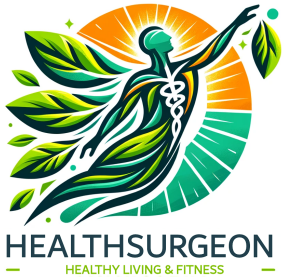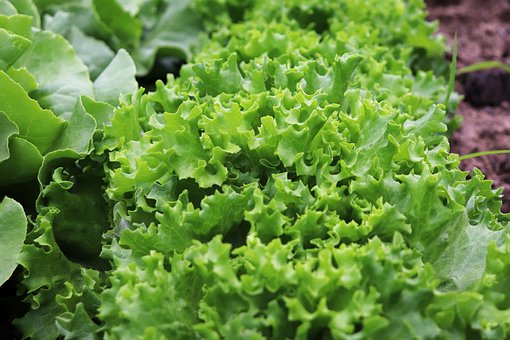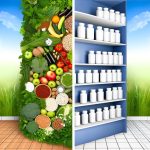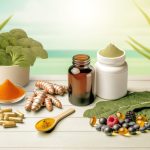Diets that consist of mainly foods derived from plants (including fruit, veggies, grains, legumes, nuts, and oils) are known as plant-based diets. You don’t necessarily need to be vegetarian or vegan to have a diet that is primarily made up of plants. Diets of this kind don’t need to eliminate animal products like poultry, fish, eggs, and dairy entirely, but more of their items will come from plants.
Other types of diets that focus on plant-based foods include the Mediterranean Diet, the Nordic Diet, and the Eatwell Guide (the British government’s official eating guidelines). Find out about the Eatwell Guide on this NHS webpage.
The Main Characteristics of a Healthy Plant-Based Diet
A plant-based diet consists of heavily consuming food that comes from plants. The exact composition of healthy, balanced plant-based diets can differ, but commonly include:
Eating a lot of vegetables, fruit, and unrefined grains is recommended, as well as some low-fat dairy products, seafood, nuts, seeds, legumes, and some unsaturated fat. Diets should include fewer fatty and processed meats, refined grains, sugar-sweetened foods, beverages, and lower amounts of salt and saturated fat than what would be found in a typical Western-style diet.
Vegetarian and Vegan Diets
A vegetarian is typically defined as a person who abstains from consuming any animal flesh or anything derived from the killing of an animal. This includes meat, poultry, fish, shellfish, and any other meal derivatives.
The most frequently encountered type of vegetarian is most likely the individual who consumes dairy products and eggs, referred to as lacto-ovo-vegetarians. However, there is no single, accepted definition of ‘vegetarian’.
Individuals may classify themselves as vegetarians due to their preference for largely plant-based diets, but some may also incorporate fish into their diets (pescatarians). Additionally, some may identify as ‘flexitarians’ or ‘semi-vegetarians’ – individuals who are mostly vegetarian, but may have occasional meat or poultry dishes.
A vegan avoids all things made from or originating from animals, including dairy products, eggs, honey, and substances derived from animals like gelatine. a
The Interest in Plant-Based Diets
There has been an enormous surge in enthusiasm for plant-based nutrition in recent times, leading to more people preferring to follow a vegan, vegetarian, or flexitarian lifestyle. It is thought that a small part of the UK population, roughly 2-3%, is vegetarian or vegan.
34% of British meat eaters stated that they had decreased their meat intake in the previous year in research from 2018, which was more than the amount from 2017 (28%).
As plant-based eating has become more trendy, substitutes for animal-based products like dairy (e.g. soya, oat, almond, coconut drinks) and oils/spreads produced from them are now easier to purchase.
An increasing number of foods that are appropriate for vegetarians and vegans have become available, and they can be worked into a plant-based diet. Things such as nut, lentil and seed treats, vegetarian and vegan-friendly prepared meals, and vegetation-based items on restaurant menus are all included.
What has been causing the higher demand for alternative proteins, like soy, in recent times? An example of this association is the greater chance of developing colorectal cancer if one indulges in a diet rich in red and processed meat, something that has been highlighted in multiple recent global reports.
Plant-Based Diets Health Benefits
Investigations into the connection between diets that focus highly on plant-based foods, like vegetarian, vegan or Mediterranean dishes, have indicated that they could potentially decrease the danger of heart illness, strokes and type 2 diabetes when compared to less nutritious diets.
Studies have shown that plant-based meals that are high in nutrients can help to reduce one’s chance of having illnesses such as high blood pressure, high cholesterol and obesity.
Eating a plant-based diet generally includes more fruits, veggies, whole grains, nuts, seeds and legumes, which are all crucial components of a healthy diet.
Thus, these diets normally supply larger portions of dietary fiber and are noticeably low in saturated fat and free sugars than different dietary habits.
This may underlie many of the health benefits observed. Those who choose to consume such diets are likely to be more health-savvy and opt for other wholesome way of living.
An example of this is that they probably exercise more, are less likely to use tobacco, drink less alcohol, and have greater financial prosperity and academically achievements. This could also provide an explanation for some of the advantageous impacts on health that have been seen.
Protein
A primary worry about obtaining protein from a diet of only plant-based foods is that these sources are often deficient in one or more essential amino acids, which must come from outside sources since our body cannot synthesize them. Therefore, plant-sourced proteins are often referred to as ‘incomplete’.
This goes against protein sources obtained from animals, which consist of full sets of necessary amino acids.
The four amino acids that are usually in lower amounts in plant-based diets are lysine (usually lower in cereal grains), methionine (lower in legumes, nuts, and seeds), tryptophan (generally found in smaller amounts in cereals), and cysteine (commonly lower in legumes).
Mixing vegetable proteins together is the best way to obtain all the necessary amino acids while following a vegan diet.
People who incorporate different plant proteins like beans, nuts, cereals, and seeds in their diet in adequate amounts can completely satisfy their need for protein with only vegetarian options.
Vitamin D
Two ways the human body gets vitamin D are through the sun’s UV rays, which stimulate production of it in the skin, and by ingesting it through food in their diet. Vitamin D exists in two different forms: D3, the active version, and D2.
Vitamin D3 is more able to be utilized by the body than the plant sourced vitamin D2, making it more successful at increasing blood levels of 25(OH)D, which plays a significant role in the body’s capacity to take in calcium.
Human skin produces Vitamin D3 when it is exposed to the ultraviolet light of the sun, or it can come from animal sources which are filled with Vitamin D3. However, plant matter only has Vitamin D2.
The EPIC-Oxford study found that vegetarian diets typically lead to an average intake of vitamin D that is almost three-quarters less than their non-vegetarian counterparts. Evidence of Vitamin D deficiency can be found in the European population with a concerning rate of prevalence. According to recent UK studies, 20 percent of the population has vitamin D deficiency, with their serum levels below 25 nmol/L. People who get their vitamin D exclusively from the sun and foods that come from plants are unlikely to get the recommended daily allowance of this nutrient, especially during the colder months.
The Scientific Advisory Committee on Nutrition (SACN) suggests that consuming fortified foods and taking nutritional supplements are beneficial for achieving appropriate levels of vitamin D.
Recently, the UK as a whole has been urged by the NHS to take a supplement providing 10 micrograms of vitamin D daily.
Iron
The World Health Organisation (WHO) states that iron deficiency is the most frequent and prevalent nutritional issue in the world. It is common in less developed nations where the major components of the diet are usually fruits and vegetables.
A major problem exists because much of the population, particularly women of reproductive age, has a high requirement for iron, and the iron content in available foods is difficult for the body to absorb.
Iron exists in two different varieties: heme and non-heme iron. Heme iron is more easily taken in through the digestive system than non-heme iron.
Heme iron, which is found in abundance in foods such as red meat and animal-derived products, is a highly nutritious dietary component. Vegetation-based foods are the sole suppliers of non-heme iron, which encompass leafy greens, legumes, nuts, seeds, and cereals.
The amount of iron that can be absorbed by the body can be substantially affected by substances that inhibit it, either in the same dish or another dish served together. It is believed that phytates, which are present in legumes, grains, oil seeds, and nuts, have the strongest ability to decrease the absorption of non-heme iron. Phytates bind together in the digestive tract, which significantly limits the absorption of iron.
Tannins and polyphenols, which are plentiful in tea and coffee, are types of phenolic compounds that impede the absorption of iron. It is suggested that individuals who have low levels of iron should not consume tea or coffee within two hours of eating a meal that is high in iron.
Nutrient-nutrient interactions can also affect bioavailability. An example of something that limits iron absorbance through the gut wall is calcium, since it has the ability to contend for assimilation. This is typically seen when calcium and iron are both in the same meal and there is a significant quantity of calcium.
In contrast, foods containing abundant amounts of Vitamin C will enhance the absorption of non-heme iron, as this Vitamin links to it to form a soluble and easily digested chelate within the small intestine. It must be kept in mind that cooking food with a high vitamin C content at a high temperature can reduce the amount of vitamin C present and therefore limit its effectiveness in helping the absorption of iron.
It appears that it is possible to keep up healthy amounts of iron in the body without eating foods from animals, if meal planning involves diminishing inhibitors and elevating enhancers.
This strategy necessitates diligent supervision, and considering the large-scale existence of iron lack throughout the world, it appears that fortification and supplementation are advocated, particularly for female individuals who are menstruating.
Zinc
There is a broad-scale occurrence of zinc deficiency around the world, with specifically those in developing nations that have a mostly plant-based food consumption being the most stricken. The low amount of zinc that can be absorbed from plant foods is the primary cause, not that there is an absence of plant-based zinc sources.
The EPIC-Oxford study discovered that vegans generally eat 20% less zinc than non-vegetarians. This study showed that the zinc intake of both vegetarian and non-vegetarian groups was lower than the recommended daily intake. It is speculated that vegetarians may be at a greater risk of having a zinc deficiency because the nutrient is less accessible from plant-based sources.
In research studies, the amount of zinc that can be absorbed from plant-based diets is often looked at in comparison to that of iron. In general, diet plans based around plants should primarily include whole grains and beans, both of which are excellent sources of zinc.
Phytic acid hinders the absorption of zinc, just as it does with non-haem iron. Nevertheless, by utilizing techniques that can induce the enzyme used for phytate breakdown, this can be drastically altered. Operations like baking, sprouting, immersing, and fermenting of beans and grains will maximize zinc absorption, provided the ideal pH is met. Enzymes that break down phytates are the most effective when the pH is acidic for cereals, but they need a neutral or slightly basic environment to work properly on certain legumes.
Whole grains and legumes have a lot of fiber, which reduces zinc absorption. Yet, using techniques such as de-hulling, pressure-cooking, and fermentation can help break apart the fiber and increase the amount of zinc that is able to be absorbed by the body.
Are All Plant-Based Diets Healthy?
It is suggested by dietary guidelines that we should eat a substantial amount of plant-based foods such as fruits, vegetables, and whole grains like oatmeal, whole wheat bread, brown rice, and whole wheat pasta.
We ought to remember to include healthy fat sources in our diets, like nuts, seeds, and fatty fish, plus unsaturated fats and spreads prepared with them. Additionally, it is wise to add nutritious proteins, including legumes, peas, and lentils.
The importance of containing all necessary nutrients in whatever type of diet is chosen must be ensured, which can be accomplished through the adoption of a plant-based eating plan. Vegetable produce contain key nutrients such as fibre, vitamins, minerals, protein and unsaturated fats.
It is noteworthy that animal-based food options provide a key source of certain nutrients in the British diet. For instance, vitamin B12 and vitamin D are not commonly seen in vegetables, but they can be found in fortified foods like cereal, margarine and dairy substitutes; the maximum amount of long chain omega-3 fats is found in fish oils (vegan alternatives made out of algae are available) and seafood, dairy goods and eggs are the leading sources of iodine.
Milk and other dairy products play a major role in supplying most people, especially kids, with calcium. In addition, it is simpler to gain iron and zinc from animal-based foods than from plant-based foods.
It is essential to remember that just because someone is not consuming animal products, it does not mean their diet is necessarily healthy. Choices that are nutritionally unwise and include many foods high in saturated fat, sodium, and sugar (such as salty snacks, fried foods, pastries, candy, and sugary jams) can be made within any type of nutrition plan. Furthermore, strict vegan diets can be lacking in a full range of nutritious foods.
A nutritious and well-rounded plant-based diet usually includes whole grains, fruits and vegetables, nuts, legumes, and oils with little to no saturated fat. Diets that are not as healthy can include heavily sugared beverages, processed grains, fried potato chips, and candy.









